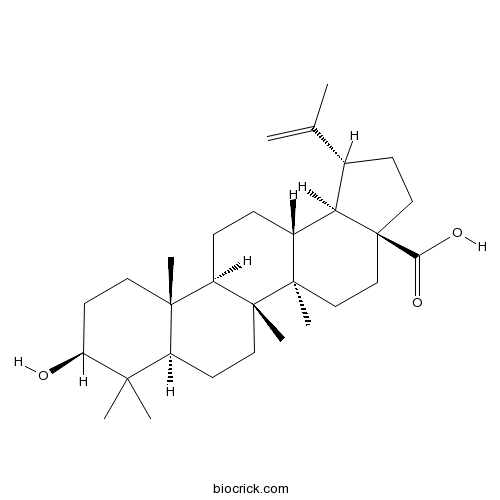Rosmarinus officinalis
Rosmarinus officinalis
1. The products in our compound library are selected from thousands of unique natural products; 2. It has the characteristics of diverse structure, diverse sources and wide coverage of activities; 3. Provide information on the activity of products from major journals, patents and research reports around the world, providing theoretical direction and research basis for further research and screening; 4. Free combination according to the type, source, target and disease of natural product; 5. The compound powder is placed in a covered tube and then discharged into a 10 x 10 cryostat; 6. Transport in ice pack or dry ice pack. Please store it at -20 °C as soon as possible after receiving the product, and use it as soon as possible after opening.
Natural products/compounds from Rosmarinus officinalis
- Cat.No. Product Name CAS Number COA
-
BCN5893
Rosmarinic acid20283-92-5
Instructions

-
BCN5892
Carnosic acid3650-09-7
Instructions

-
BCN5488
Genkwanin437-64-9
Instructions

-
BCN5524
Betulinic acid472-15-1
Instructions

-
BCN5528
Betulin473-98-3
Instructions

-
BCN1055
Carnosol5957-80-2
Instructions

Mechanical, barrier, and color properties of banana starch edible films incorporated with nanoemulsions of lemongrass ( Cymbopogon citratus) and rosemary ( Rosmarinus officinalis) essential oils.[Pubmed: 30060685]
Edible films are among the most promising fields in food science over the last decade due to their versatility (they can be made from a wide array of materials) and because they can be used as carriers of different active substances, like antioxidants, antimicrobial agents, and essential oils from plants. In the case of the essential oils, their inclusion in edible films is limited by their low water solubility. Nanoemulsions are thermodynamically stable and transparent systems that can be used as a way of incorporating essential oils into edible film matrices. In this paper, we developed lemongrass and rosemary essential oil nanoemulsions by using a low-energy method, observing the effect of the surfactant/oil ratio in their physicochemical properties. Then we studied the effect of the nanoemulsions concentration incorporated into banana starch edible films. We observed that essential oils' nanoemulsions have a plasticizing effect increasing the film's water vapor permeability, transparency, and elongation at break, while the hydrophobic nature of the essential oils lead to a decrease in their water solubility.
Could beta-myrcene be an alternative to albendazole for the treatment of experimental cystic echinococcosis?[Pubmed: 30040945]
Echinococcus granulosus causes hydatidosis or cystic echinococcosis in humans and livestock. In humans, this disease can be managed with surgery, percutaneous treatment, chemotherapy and/or observation. The chemotherapeutic agents used and approved for treatment of hydatidosis are benzimidazoles. Because of the difficulties in achieving successful treatment, considerable efforts have been made to find new natural compounds against hydatid disease. Beta-myrcene is a monoterpene presented in the essential oils of different plants. It is the principal component of essential oil of Rosmarinus officinalis (rosemary). The goal of the present study was to evaluate the in vitro effects of beta-myrcene against germinal cells, protoscoleces and murine cyst of E. granulosus, as well also, investigate its chemoprophylactic activity in a murine model of cystic echinococcosis. For the in vitro assays, the parasites were incubated with beta-myrcene at 10, 5 and 1 μg/mL. The treatments were dose and time-dependent, and consistent with the observed morphological alterations. In the chemoprophylactic efficacy study, the effect of beta-myrcene was similar to albendazole, the reference drug for human echinococcosis treatment.
Anticancer potential of rosmarinic acid and its improved production through biotechnological interventions and functional genomics.[Pubmed: 30022261]
Rosmarinic acid (RA) is a highly valued natural phenolic compound that is very commonly found in plants of the families Lamiaceae and Boraginaceae, including Coleus blumei, Heliotropium foertherianum, Rosmarinus officinalis, Perilla frutescens, and Salvia officinalis. RA is also found in other members of higher plant families and in some fern and horned liverwort species. The biosynthesis of RA is catalyzed by the enzymes phenylalanine ammonia lyase and cytochrome P450-dependent hydroxylase using the amino acids tyrosine and phenylalanine. Chemically, RA can be produced via methods involving the esterification of 3,4-dihydroxyphenyllactic acid and caffeic acid. Some of the derivatives of RA include melitric acid, salvianolic acid, lithospermic acid, and yunnaneic acid. In plants, RA is known to have growth-promoting and defensive roles. Studies have elucidated the varied pharmacological potential of RA and its derived molecules, including anticancer, antiangiogenic, anti-inflammatory, antioxidant, and antimicrobial activities. The demand for RA is therefore, very high in the pharmaceutical industry, but this demand cannot be met by plants alone because RA content in plant organs is very low. Further, many plants that synthesize RA are under threat and near extinction owing to biodiversity loss caused by unscientific harvesting, over-collection, environmental changes, and other inherent features. Moreover, the chemical synthesis of RA is complicated and expensive. Alternative approaches using biotechnological methodologies could overcome these problems. This review provides the state of the art information on the chemistry, sources, and biosynthetic pathways of RA, as well as its anticancer properties against different cancer types. Biotechnological methods are also discussed for producing RA using plant cell, tissue, and organ cultures and hairy-root cultures using flasks and bioreactors. The recent developments and applications of the functional genomics approach and heterologous production of RA in microbes are also highlighted. This chapter will be of benefit to readers aiming to design studies on RA and its applicability as an anticancer agent.
Carnosic acid regulates cell proliferation and invasion in chronic myeloid leukemia cancer cells via suppressing microRNA-708.[Pubmed: 30003745]
Carnosic acid (CA) is an important polyphenol mainly isolated from the famous spice and the medicinal plant Rosmarinus officinalis. CA has been shown to exhibit tremendous pharmacological properties which include, but are not limited to, anticancer, antioxidant and anti-inflammatory activities. The current study was designed to evaluate the anticancer effects of CA against chronic myeloid leukemia (CML) which is one of the rare but deadly malignancies both in men and women.


